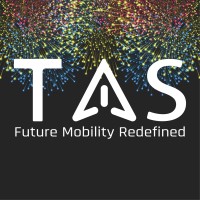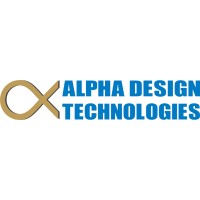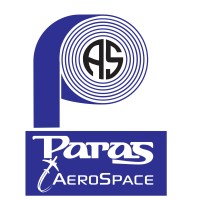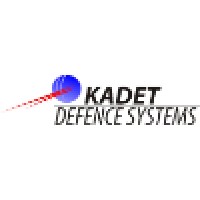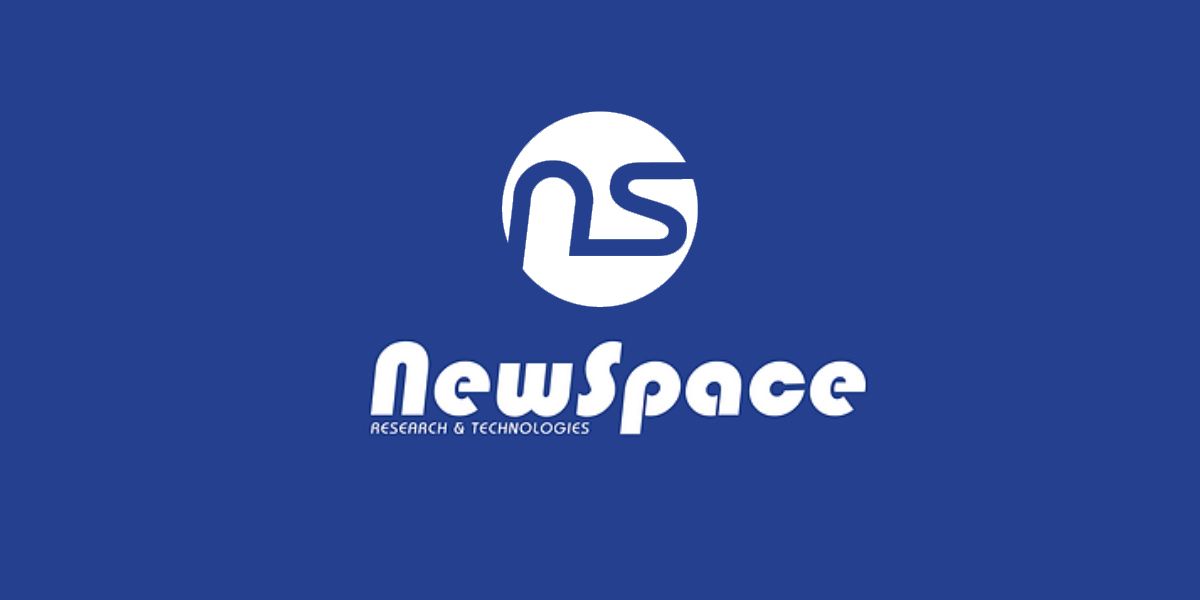Feed aggregator
Top 10 Smart Lighting Companies in India
India’s smart lighting industry is witnessing rapid growth, driven by innovation, sustainability, and advancements in technology. Leading companies are transforming traditional lighting systems into intelligent solutions that cater to modern lifestyles and smart homes. From globally renowned brands like Philips and Osram to trusted domestic players like Havells, Syska, and Bajaj Electricals, these companies are revolutionizing how lighting integrates with everyday life. With features such as energy efficiency, voice control, automation, and seamless connectivity to home automation platforms, the industry is setting benchmarks for convenience and customization. As the demand for smart living increases, these companies continue to push the boundaries of innovation, offering sustainable and user-centric lighting solutions across residential, commercial, and industrial sectors.
Philips India Limited
Philips India Limited, a global leader in lighting solutions, is renowned for its innovative smart lighting products that combine advanced technology with seamless functionality. The company offers an extensive range of smart bulbs, fixtures, and lighting systems designed to integrate effortlessly with popular home automation platforms like Alexa, Google Assistant, and Apple HomeKit. Known for enhancing convenience, energy efficiency, and customization, Philips continues to redefine modern lighting solutions for homes, offices, and public spaces.
Havells India Limited
Havells India Limited is a leading name in the electrical and consumer goods industry, renowned for its innovative and energy-efficient solutions. The company offers a wide range of smart lighting products, including LED bulbs, fixtures, and automation systems designed to elevate modern living. Known for its commitment to quality, sustainability, and cutting-edge technology, Havells seamlessly integrates advanced lighting solutions with user-friendly features, making it a trusted choice for homes, offices, and commercial spaces across India.
Syska LED Lights Pvt. Ltd.
Syska LED Lights Pvt. Ltd. is a prominent player in the smart lighting industry, known for its innovative and energy-efficient solutions. The company offers a diverse range of smart LED lighting products, including bulbs and fixtures, that are compatible with voice assistants like Alexa and Google Assistant. With features like customizable colors, brightness levels, and scheduling options, Syska’s smart lighting solutions are designed to enhance convenience and elevate modern lifestyles. The brand’s focus on sustainability and cutting-edge technology has made it a preferred choice for homes, offices, and commercial spaces across India.
Bajaj Electricals Ltd.
Bajaj Electricals Ltd., a trusted name with a rich legacy in the lighting industry, has successfully ventured into the smart lighting segment. The company offers a wide range of innovative products that blend traditional reliability with modern technology, including smart LED bulbs, fixtures, and automation systems. Known for its commitment to quality and energy efficiency, Bajaj’s smart lighting solutions are designed to provide convenience, customization, and sustainability, making them ideal for homes, offices, and commercial spaces across India.
Wipro Lighting
Wipro Lighting is a leading provider of innovative lighting solutions, offering a diverse range of smart lighting products tailored for residential and commercial spaces. The company focuses on delivering energy-efficient and sustainable solutions that combine advanced technology with superior design. Wipro’s smart lighting systems provide customizable options, including automation and voice-controlled features, ensuring convenience and enhanced user experiences. With a strong emphasis on sustainability and innovation, Wipro Lighting continues to set benchmarks in the lighting industry.
Osram India Private Limited
Osram India Private Limited, a subsidiary of the globally renowned lighting company Osram, is a leader in advanced smart lighting solutions. The company caters to a wide range of sectors, including automotive, residential, and commercial lighting, offering innovative and energy-efficient products. Osram’s smart lighting solutions are designed to integrate seamlessly with modern technologies, providing enhanced functionality and customization. With a strong focus on quality, innovation, and sustainability, Osram India continues to redefine lighting standards across industries.
Samsung India Electronics Private Ltd.
Samsung India Electronics Private Ltd. is a leading innovator in smart technology, offering a range of smart lighting solutions that seamlessly integrate with its extensive ecosystem of smart home devices. Designed to enhance connected living, Samsung’s smart lighting products provide advanced features like voice control, automation, and energy efficiency. With a focus on delivering convenience, customization, and cutting-edge technology, Samsung continues to redefine modern living experiences for homes and businesses alike.
The post Top 10 Smart Lighting Companies in India appeared first on ELE Times.
French vintage phone from the 60s has full electronic diagram inside of it. Talk about serviceability
 | submitted by /u/Dull-Pressure9628 [link] [comments] |
I modified an old phone from the 60s and added modern electronics
 | submitted by /u/Dull-Pressure9628 [link] [comments] |
Arm’s Chiplet System Architecture eyes ecosystem sweet spot

Arm has announced the availability of the first public specification drafted around its Chiplet System Architecture (CSA), a set of system partitioning and chiplet connectivity standards harnessed in a design ecosystem supported by over 60 companies. The companies that are part of the CSA initiative include ADTechnology, Alphawave Semi, AMI, Cadence, Jaguar Micro, Kalray, Rebellions, Siemens, and Synopsys.
CSA aims to offer industry-wide standards and frameworks by facilitating the reuse of specialized chiplets, and thus address the fragmentation caused by compatibility issues in chiplet design. It provides a shared understanding of defining and connecting chiplets while developing composable system-on-chips (SoCs).
A couple of recent announcements show how semiconductor firms are employing CSA to build chiplets as part of Arm Total Design, a platform for deploying chiplet-based compute subsystems. Arm Total Design facilitates custom silicon solutions powered by Arm Neoverse Compute Subsystems (CSS), which includes processor cores, IPs, software, and design tools.
Take the case of Alphawave Semi, which has combined its proprietary I/O dies with an Arm Neoverse CSS-powered chiplet. In this chiplet design, Alphawave Semi has employed AMBA CHI chip-to-chip (C2C) architecture specification to connect artificial intelligence (AI) accelerators.

Figure 1 The block diagram shows a chiplet’s major design building blocks. Source: Alphawave Semi
ADTechnology, another member of Arm’s CSA initiative, has utilized Neoverse CSS V3 technology to create a CPU chiplet for high-performance computing (HPC) and AI/ML training and inference applications. In this chiplet, ADTechnology has incorporated Rebellions’ REBEL AI accelerator; the chiplet design is implemented on Samsung Foundry’s 2-nm gate-all-around (GAA) process node, which has been standardized in the CSA ecosystem.

Figure 2 ADTechnology’s CPU chiplet is powered by Neoverse CSS V3 technology. Source: Arm
AMI, also a member of CSA initiative, is contributing its firmware expertise to accelerate the development of custom chiplet solutions. AMI, the first independent firmware vendor in the Arm Total Design ecosystem, offers modular framework for separating the compute and I/O subsystems. Its pre-configured and pre-tested production quality modules for the reusable chiplets streamline the time and resources required for this stage of development.
A multitude of industry-wide chiplet initiatives—spanning from Arm Total Design to Neoverse CSS to CSA—is a testament to how Arm sees the emergence of chiplets as a major opportunity. It also highlights how Arm sees its place as both chiplet solution provider and ecosystem builder.
The ecosystem-building part is especially crucial because RISC-V companies are also making inroads in the chiplets realm.
Related Content
- TSMC, Arm Show 3DIC Made of Chiplets
- A closer look at Arm’s chiplet game plan
- Chiplets Get a Formal Standard with UCIe 1.0
- How the Worlds of Chiplets and Packaging Intertwine
- Imec’s Van den hove: Moving to Chiplets to Extend Moore’s Law
The post Arm’s Chiplet System Architecture eyes ecosystem sweet spot appeared first on EDN.
Photon Design previews new quantum dot simulation tool at Photonics West
The beauty and complexity of some electronic devices truly amazes me
 | submitted by /u/antek_g_animations [link] [comments] |
Weekly discussion, complaint, and rant thread
Open to anything, including discussions, complaints, and rants.
Sub rules do not apply, so don't bother reporting incivility, off-topic, or spam.
Reddit-wide rules do apply.
To see the newest posts, sort the comments by "new" (instead of "best" or "top").
[link] [comments]
Forbidden connector
 | Nope, I'll leave it in place. Utterly equivalent to spaghetti code programmaning. [link] [comments] |
Top 10 Anti Drone Companies in India
The Indian skies are increasingly vulnerable to rogue drones, necessitating the development of robust countermeasures. A burgeoning ecosystem of Indian companies is rising to the challenge, developing innovative anti-drone technologies to safeguard critical infrastructure and national security. From AI-powered detection systems to electronic warfare solutions, these companies are at the forefront of ensuring airspace safety in a rapidly evolving threat landscape. Here are 10 of the top anti-drone companies in India:
- Throttle Aerospace Systems is a leading innovator in anti-drone technology, recognized for its cutting-edge solutions that protect critical infrastructure and ensure safety in airspace. Among its most notable offerings is the “Defender” system, which leverages artificial intelligence and vision-based techniques to effectively detect, track, and neutralize unauthorized drones. By integrating advanced sensing, machine learning, and automated countermeasures, Throttle Aerospace Systems provides reliable and scalable solutions to mitigate the growing threat of drones in both military and civilian contexts. The company is at the forefront of shaping the future of drone defense, ensuring secure environments across various sectors.
2. Alpha Design Technologies is a leading innovator in the development of electronic warfare systems, with a strong focus on countering emerging threats like drones. Specializing in advanced anti-drone technologies, the company designs and manufactures cutting-edge solutions to detect, track, and neutralize unauthorized UAVs (unmanned aerial vehicles). Leveraging its deep expertise in electronic systems and defense technologies, Alpha Design Technologies provides critical capabilities to safeguard airspace and sensitive infrastructure from drone-based threats. Through its commitment to research, development, and deployment of state-of-the-art electronic warfare solutions, the company plays a pivotal role in enhancing national security and defense operations.
3. Adani Defence & Aerospace is a key player in India’s defense and aerospace sector, renowned for its commitment to advancing cutting-edge technologies to support national security. With a growing focus on developing anti-drone solutions, the company is working to address the increasing challenges posed by unmanned aerial vehicles (UAVs) in military and civilian spaces. Adani Defence & Aerospace leverages its deep expertise in defense systems, electronics, and aerospace technologies to design innovative counter-drone solutions that ensure the safety of critical infrastructure and airspace. Through continuous research and development, the company is reinforcing its position as a leader in defense innovation, contributing to India’s defense modernization efforts.
4. IdeaForge, a prominent name in the drone industry, is renowned for its cutting-edge unmanned aerial vehicles (UAVs) that cater to diverse sectors such as defense, agriculture, and infrastructure. While primarily known for its drone innovations, the company is also expanding its capabilities to address the growing concerns surrounding drone-related threats. By developing anti-drone technologies, IdeaForge aims to protect its own UAVs from malicious interference and enhance the safety and security of airspace. Through the integration of advanced countermeasures and smart defense systems, IdeaForge is positioning itself at the forefront of both drone and anti-drone technology, ensuring a balanced approach to UAV safety and security.
5. Paras Aerospace is a leading innovator specializing in the development of counter-Unmanned Aerial Systems (C-UAS) technologies, aimed at addressing the growing threat of unauthorized drones. The company focuses on creating advanced solutions for drone detection, tracking, and neutralization, including cutting-edge jamming technologies to disrupt and disable rogue UAVs. With a strong commitment to enhancing airspace security, Paras Aerospace’s counter-UAS systems are designed to safeguard critical infrastructure, military assets, and public spaces from potential drone-based risks.
6. Kadet Defence Systems is a dynamic player in the field of counter-drone technology, offering a comprehensive range of anti-drone solutions designed to safeguard critical infrastructure and airspace. The company specializes in advanced systems for drone detection, tracking, and jamming, enabling effective countermeasures against unauthorized UAVs. With a focus on precision and reliability, Kadet Defence Systems provides cutting-edge technologies that help mitigate the risks posed by drones in both civilian and defense contexts. Their solutions are pivotal in enhancing security protocols, ensuring the protection of sensitive areas from potential drone-related threats.
7. Sagar Defence is a leading provider of advanced anti-drone solutions, offering a comprehensive suite of technologies designed to detect, track, and neutralize unauthorized drones. Specializing in cutting-edge drone detection and jamming systems, the company plays a crucial role in enhancing airspace security for both military and civilian applications. Sagar Defence’s solutions are built to protect critical infrastructure, military assets, and public safety from the growing threat of drone-based intrusions.
8. Veda Defence Systems is a specialized technology company focused on developing advanced electronic warfare systems, with a strong emphasis on countering drone-based threats. The company’s expertise lies in creating cutting-edge anti-drone technologies that incorporate electronic jamming, detection, and neutralization capabilities to safeguard critical infrastructure and airspace. With a deep commitment to defense innovation, Veda Defence Systems designs highly reliable solutions to counter the growing risks posed by unmanned aerial vehicles (UAVs) in both military and civilian environments.
9. Raphe mPhibr is a leading provider of advanced anti-drone solutions, offering a range of cutting-edge technologies designed to detect, track, and neutralize unauthorized drones. Specializing in drone detection, tracking, and jamming systems, the company delivers reliable and effective countermeasures to protect critical infrastructure and airspace. With a focus on precision and real-time response, Raphe mPhibr’s solutions are tailored to address the evolving threats posed by unmanned aerial vehicles (UAVs) in both civilian and military sectors.
10. NewSpace Research and Technologies is a cutting-edge company specializing in the development of advanced technologies aimed at enhancing defense and security. With a particular focus on anti-drone solutions, the company is at the forefront of creating innovative systems designed to detect, track, and neutralize unauthorized drones. Leveraging state-of-the-art technologies, NewSpace Research and Technologies provides critical solutions to protect airspace, military installations, and critical infrastructure from the growing threat posed by unmanned aerial vehicles (UAVs).
The post Top 10 Anti Drone Companies in India appeared first on ELE Times.
Top 10 Solar Power Plants in India
India is blazing a trail in renewable energy, and its solar power plants are at the forefront of this transformation. From the sun-drenched deserts of Rajasthan to the sunny plains of Karnataka and Andhra Pradesh, the country is home to some of the largest and most innovative solar parks in the world. These mega installations are not only harnessing solar power but also driving sustainable development and contributing to India’s ambitious renewable energy goals. This article highlights the top solar power plants in India, showcasing their scale, innovation, and impact on the nation’s journey toward a greener and more energy-secure future.
- Bhadla Solar Park, Rajasthan
Nestled in the sun-drenched deserts of Jodhpur, Rajasthan, Bhadla Solar Park stands tall as a beacon of India’s renewable energy revolution. Spanning an impressive 14,000 acres, it is not only the largest solar park in India but also one of the largest in the world. With a massive installed capacity of 2,245 MW, this engineering marvel has transformed the barren, arid land of Bhadla into a thriving hub of clean energy production. Known for its high solar radiation and minimal rainfall, the region provides ideal conditions for harnessing solar power, making Bhadla Solar Park a critical contributor to India’s ambitious goal of achieving 500 GW of renewable energy capacity by 2030.
- Pavagada Solar Park, Karnataka
Spread across a sprawling 13,000 acres in the sunny plains of Tumkur district, Karnataka, the Pavagada Solar Park is a shining example of India’s commitment to clean energy. With an impressive installed capacity of 2,050 MW, it ranks among the largest solar parks in the world. What makes this project unique is its inclusive approach—land for the park was leased from local farmers, providing them a steady source of income while transforming the region into a hub for renewable energy. As part of India’s renewable energy mission, this mega solar park lights up countless homes while contributing significantly to reducing the nation’s carbon footprint.
- Kurnool Ultra Mega Solar Park, Andhra Pradesh
Nestled in the Kurnool district of Andhra Pradesh, the Kurnool Ultra Mega Solar Park is a monumental step in India’s green energy journey. With an installed capacity of 1,000 MW, this solar park spans over 5,932 acres, transforming the arid terrain into a powerhouse of renewable energy. Commissioned in 2017, it was one of the first solar parks in India to achieve the milestone of a gigawatt-scale capacity. The park plays a pivotal role in supplying clean electricity to the grid, catering to the energy needs of thousands of households. With its strategic location and efficient design, Kurnool Ultra Mega Solar Park not only reinforces Andhra Pradesh’s leadership in renewable energy but also serves as a blueprint for sustainable development in the region.
- Rewa Ultra Mega Solar Park, Madhya Pradesh
Located in the Rewa district of Madhya Pradesh, the Rewa Ultra Mega Solar Park stands as a testament to India’s renewable energy ambitions. With a total installed capacity of 750 MW, this sprawling solar park, spread across 1,590 hectares, has set benchmarks in sustainability and innovation. Commissioned in 2018, it became the first project in India to supply solar power to an inter-state open access customer, powering the Delhi Metro with clean energy. Rewa’s success lies in its groundbreaking tariff structure, which made solar energy more affordable and accessible. Recognized globally as a model project, the park showcases how clean energy can drive economic growth while contributing to India’s climate goals.
- Charanka Solar Park, Gujarat
Situated in the arid Patan district of Gujarat, Charanka Solar Park is a pioneer in India’s solar energy revolution. Spanning over 2,000 hectares, this solar park boasts an impressive installed capacity of 600 MW, with plans for future expansion. Established in 2012 as part of the Gujarat Solar Park initiative, Charanka was one of Asia’s first and largest solar parks, setting the stage for large-scale renewable energy projects in India. Its unique model integrates solar power generation with water conservation and employment opportunities for local communities, making it a shining example of sustainable development. With its advanced infrastructure and scalability, Charanka continues to illuminate Gujarat’s path toward a greener future.
- Ananthapuramu-II Solar Park, Andhra Pradesh
Nestled in the sun-soaked district of Anantapur, Ananthapuramu-II Solar Park exemplifies Andhra Pradesh’s commitment to renewable energy leadership. With an installed capacity of 1,500 MW, this solar park is among the largest in India, leveraging the region’s high solar insolation to produce clean and reliable energy. It is a part of the state’s ambitious efforts to harness renewable resources while reducing dependency on conventional power sources. The park not only contributes significantly to the national grid but also supports sustainable development by creating local employment opportunities and promoting eco-friendly practices in the region.
- Mandsaur Solar Farm, Madhya Pradesh
Situated in the vibrant heartland of Madhya Pradesh, Mandsaur Solar Farm is a shining example of India’s renewable energy revolution. With an installed capacity of 250 MW, this solar farm is instrumental in powering thousands of homes while significantly reducing carbon emissions. Built on barren and unused land, Mandsaur Solar Farm exemplifies sustainable innovation by transforming wastelands into a source of green energy. Its efficient solar infrastructure contributes to the state’s energy security, aligning with India’s vision of a cleaner, greener future.
- NP Kunta (Ananthapuram Ultra Mega Solar Park), Andhra Pradesh
Nestled in the sunlit terrains of Andhra Pradesh, the NP Kunta (Ananthapuram Ultra Mega Solar Park) stands as a symbol of India’s commitment to sustainable energy. With a robust installed capacity of 978 MW, this solar park leverages the region’s abundant sunlight to generate clean and renewable energy on a massive scale. Designed with advanced technology and efficient resource management, NP Kunta not only contributes significantly to the state’s power grid but also paves the way for a greener and more energy-independent India.
- Kamuthi Solar Power Project, Tamil Nadu
The Kamuthi Solar Power Project, located in the Tamil Nadu state of India, is one of the largest solar power plants in the world. Spanning over 2,500 acres in the Ramanathapuram district, the project boasts an installed capacity of 648 MW, making it a key player in India’s push toward renewable energy. Developed by Adani Green Energy, it features over 2.5 million solar panels, generating enough electricity to power around 150,000 homes. The Kamuthi Solar Power Project is a testament to India’s commitment to reducing its carbon footprint and boosting clean energy generation, contributing significantly to the country’s renewable energy goals.
- Rajasthan Solar Park, Rajasthan
The Rajasthan Solar Park, located in the Jaisalmer district of Rajasthan, India, is one of the largest solar power installations in the world. Covering an area of approximately 5,000 acres, the park has an impressive capacity of over 2,245 MW, making it a key asset in India’s renewable energy strategy. The project, which includes multiple solar developers, aims to harness the abundant sunlight in the Thar Desert to generate clean, sustainable power. As a significant contributor to India’s goal of achieving 500 GW of non-fossil fuel-based energy capacity by 2030, the Rajasthan Solar Park plays a crucial role in the country’s transition to green energy.
The post Top 10 Solar Power Plants in India appeared first on ELE Times.
Organizer that works great for small Contact Sockets and Pins
 | submitted by /u/ModderRetro [link] [comments] |
Detail of "Diode Graphics" on 1973 Atari Arcade board
 | submitted by /u/zyzzogeton [link] [comments] |
EEVblog 1663 - BM786 Multimeter REPAIR + InEr Error Investigation
Some soviet-era microchips and other
 | submitted by /u/dexolexa7834r [link] [comments] |
Revolutionizing Energy Landscapes through Renewables and Advanced Storage Systems
The global transition to renewable energy is no longer just an aspiration—it has become a necessity. As nations strive to mitigate the effects of climate change and reduce their carbon footprints, renewable energy sources such as solar, wind, and hydropower have emerged as viable alternatives to fossil fuels. However, the intermittent nature of these sources poses significant challenges to reliability and grid stability. This is where energy storage systems (ESS) come into play, offering solutions that enhance the efficiency, flexibility, and resilience of renewable energy systems.
This article explores the latest advancements in renewable energy and energy storage systems, their integration, and transformative impact on global energy landscapes.
The Growth of Renewable Energy- Solar Power
Solar energy has become among the fastest-growing renewable energy sources. With the declining cost of photovoltaic (PV) cells and improvements in efficiency, solar power is now accessible for residential, commercial, and utility-scale applications. Innovations such as bifacial solar panels, tandem solar cells, and perovskite materials are pushing the efficiency boundaries beyond 30%, making solar energy even more competitive.
- Wind Energy
Onshore and offshore wind farms are driving large-scale renewable energy generation. Offshore wind turbines, in particular, are scaling new heights with advancements in turbine size and capacity. Next-generation turbines, such as the GE Haliade-X and Siemens Gamesa’s SG 14-222 DD, can generate over 14 MW of power, significantly boosting energy output while reducing costs.
- Hydropower and Marine Energy
Hydropower remains a cornerstone of renewable energy, but innovations like small modular hydropower systems and pumped-storage hydropower are making it more adaptable. Marine energy technologies, including tidal and wave energy converters, are also gaining traction, unlocking the vast potential of oceans as a renewable resource.
The Role of Energy Storage SystemsThe integration of energy storage systems is pivotal to overcoming the challenges of renewable energy’s intermittency. ESS provides solutions for storing excess energy generated during peak production periods and releasing it when demand is high or supply is low. Below are the key advancements and types of energy storage systems.
- Lithium-Ion Batteries
Lithium-ion (Li-ion) batteries dominate the energy storage landscape due to their high energy density, long cycle life, and declining costs. Recent innovations include:
- Solid-State Batteries: These next-generation batteries replace liquid electrolytes with solid materials, enhancing safety, energy density, and longevity.
- Second-Life Applications: Used EV batteries are being repurposed for stationary storage applications, extending their utility and reducing waste.
- Flow Batteries
Flow batteries, such as vanadium redox flow batteries (VRFB), offer long-duration energy storage with the ability to scale independently in terms of power and capacity. They are ideal for grid-scale applications, supporting renewable energy integration by providing hours of backup power.
- Thermal Energy Storage (TES)
TES systems store energy in heat or cold form for later use. Innovations include:
- Molten Salt Systems: Widely used in concentrated solar power (CSP) plants to store thermal energy for power generation during non-sunny periods.
- Phase-Change Materials (PCMs): These materials store and release energy during phase transitions, offering efficient thermal storage solutions for buildings and industrial processes.
- Hydrogen Energy Storage
Green hydrogen, produced through electrolysis using renewable energy, serves as a versatile storage medium. Hydrogen can be stored in tanks or underground caverns and later used for electricity generation, industrial processes, or as a fuel for vehicles.
- Compressed Air Energy Storage (CAES)
CAES systems store energy by compressing air into underground reservoirs and releasing it to drive turbines during periods of high demand. Advanced adiabatic CAES systems improve efficiency by capturing and reusing heat generated during compression.
Integration of Renewable Energy and ESSThe integration of renewable energy and ESS is driving a transformation in energy systems, enabling decarbonization, decentralization, and digitalization:
- Microgrids
Microgrids, powered by renewable energy and ESS, are enabling localized energy generation and consumption. They enhance energy resilience, particularly in remote or disaster-prone areas, by reducing reliance on centralized grids.
- Virtual Power Plants (VPPs)
VPPs aggregate distributed energy resources (DERs), such as solar panels, wind turbines, and ESS, to act as a single power plant. Advanced software platforms optimize energy dispatch, balancing supply and demand in real time.
- Smart Grids
Smart grids integrate renewable energy and ESS with advanced communication and control technologies. Features include demand-response systems, predictive maintenance, and real-time grid monitoring, improving efficiency and reliability.
Applications and Benefits- Residential and Commercial Use
Homeowners and businesses are adopting renewable energy systems with ESS to lower electricity bills and increase energy independence. Residential batteries like Tesla Powerwall and LG Chem’s RESU provide backup power during outages and store excess solar energy for nighttime use.
- Utility-Scale Projects
Large-scale ESS installations, such as Tesla’s Hornsdale Power Reserve in Australia and Fluence’s energy storage projects, are stabilizing grids and supporting renewable energy penetration.
- Transportation
Renewable energy and ESS are powering the transition to electric mobility. EVs, combined with vehicle-to-grid (V2G) technologies, can serve as mobile energy storage units, enhancing grid flexibility.
- Industrial Applications
Industries are adopting ESS to manage peak loads, reduce energy costs, and ensure uninterrupted operations. Renewable-powered industrial microgrids are also helping companies achieve sustainability goals.
Challenges and Future Directions- Cost and Scalability
While the cost of renewable energy and ESS is declining, initial capital investments remain high. Continued innovation and economies of scale are essential to make these technologies more accessible.
- Material Availability
The growing demand for materials like lithium, cobalt, and rare earth elements raises concerns about resource availability and environmental impact. Research into alternative materials and recycling technologies is crucial.
- Policy and Regulation
Supportive policies and regulatory frameworks are needed to encourage the adoption of renewable energy and ESS. Incentives, subsidies, and streamlined permitting processes can accelerate deployment.
- Technological Integration
Seamlessly integrating renewable energy and ESS with existing grids requires advanced forecasting, control algorithms, and interoperability standards.
ConclusionRenewable energy and energy storage systems are redefining the global energy landscape, offering solutions to some of the most pressing challenges of our time. As technology advances and adoption scales, these systems will play a pivotal role in achieving a sustainable, low-carbon future. By addressing challenges and fostering innovation, we can unlock the full potential of renewable energy and ESS, paving the way for a cleaner, greener, and more resilient world.
The post Revolutionizing Energy Landscapes through Renewables and Advanced Storage Systems appeared first on ELE Times.
Pain
I work in repairs and some customers tryes to repair it them selfs
[link] [comments]
Rohde & Schwarz presents new wideband modulated load pull solution based on the R&S RTP oscilloscope
Rohde & Schwarz launches its novel wideband modulated load pull solution. Based on the R&S RTP oscilloscope, this solution offers an extension to traditional vector network analyzer (VNA)-based solutions for non-linear device characterization. By enabling load pull with wideband modulated signals, it allows precise validation of key performance indicators across varying impedances, such as error vector magnitude (EVM) and adjacent channel leakage ratio (ACLR), to support the development of RF components for next-generation wireless technologies.
The new wideband modulated load pull solution from Rohde & Schwarz takes a novel approach to RF frontend testing. By using the R&S RTP oscilloscope instead of a traditional vector network analyzer (VNA), this solution enables wideband modulation characterization of RF frontends across varying impedances.
A traditional modulated load pull solution validates modulation characteristics under different impedances with a test setup consisting of a vector signal generator and vector signal analyzer. A passive tuner is used to simulate different load conditions. This method, although widely used, has several key limitations: there is a significant frequency response and group delay of the tuner in amplitude and phase leading to measurement uncertainties. While these may be ignored for narrowband applications, they become significant for higher signal bandwidths, typically around 100 MHz and above.
Innovative oscilloscope-based approachThe Rohde & Schwarz wideband modulated load pull solution addresses these limitations with a new test setup that is ideal for verifying power amplifier performance when connected to an antenna, which typically shows a dispersive impedance. This solution is based on the R&S RTP084 oscilloscope, equipped with the wideband modulated load-pull option R&S RTP-K98, and paired with the R&S SMW200A vector signal generator. The oscilloscope’s internal architecture guarantees absolute phase and time synchronization for forward and reverse wave measurements. The dual path vector signal generator R&S SMW200A offers accurate timing and phase stability between the input and tuning signal for load pull operation. The R&S RTP-K98 software processes the oscilloscope’s measured data, performs the necessary calculations to achieve the target impedance value and controls the signal generator. Hence, it is well-suited to verify the performance of RF frontends, which are typically used over wider frequency ranges and multiple transmission bands, such as 5G or Wi-Fi.
The R&S RTP oscilloscope combines high-class signal integrity with fast acquisition and analysis. Dedicated acquisition and processing ASICs enable high acquisition and processing rate for 750,000 waveforms/s. The unique 3 Gpoints per channel allow for long acquisition periods, and the high-precision digital trigger operates with a hardware-based clock data recovery (CDR) on embedded clock signals at an industry-leading rate of 16 Gbps.
Markus Lörner, Market Segment Manager RF & Microwave Components at Rohde & Schwarz, says: “Our innovative approach for wideband modulated load pull utilizes standard test instruments readily available in many labs, directly addressing the growing need for verifying wideband RF frontends across varying impedances, as experienced in wideband antenna usage. The incorporation of the oscilloscope as the key instrument is a game-changer, offering rapid wideband signal capture, which is absolutely vital in this application.”
The new wideband modulated load pull solution is available now from Rohde & Schwarz. More information on load pull testing from Rohde & Schwarz.
The post Rohde & Schwarz presents new wideband modulated load pull solution based on the R&S RTP oscilloscope appeared first on ELE Times.
ProPhotonix launches 265nm UVC LED Area Light at Photonics West
ASDC Advocates for 2 Lakh Skilled Professionals by 2030 to Power EV Revolution
New Delhi: Automotive Skills Development Council (ASDC) made a strong showing at the Bharat Mobility Global Auto Expo 2025, India’s premier automotive event, with prominent displays at Bharat Mandapam in New Delhi. The stalls, inaugurated by ASDC’s President F R Singhvi, aimed to showcase the council’s crucial skilling initiatives and underscore the importance of attracting young talent to the automotive sector.
Speaking at the expo, F R Singhvi, who also serves as JMD of Sansera Engineering Pvt Ltd, emphasized the event’s alignment with Prime Minister Narendra Modi’s vision for a greener India, focusing on advanced energy storage, green hydrogen, and e-mobility. “The battery is the core of this industry,” Singhvi stated, citing the India Battery Manufacturing Vision, which projects over 2.6 million jobs and a USD 35 billion investment by 2035. He further highlighted the rapid growth of EV sales as a cleaner alternative and reiterated the government’s ambitious goal of 30% vehicle fleet electrification by 2030.
Singhvi highlighted the surging adoption of electric vehicles (EVs) in India, propelled by the government’s ambitious target of 30% fleet electrification by 2030. “Achieving 100% localization of EV components will require adding 30,000 EV-ready workers annually,” he said. By 2030, the automotive sector will need up to 2 lakh skilled professionals to support this transformative vision. He added, “The auto industry’s biggest challenge lies in addressing the shortage of skilled manpower equipped for the electric vehicle sector.”
Vinkesh Gulati, Vice President, ASDC, forecasted substantial growth in India’s domestic EV market, stressing the need for rapid upskilling, reskilling, and fresh skilling to keep pace with global trends. “The transition from Internal Combustion Engine (ICE) vehicles to EVs demands expertise across multiple disciplines, including electrical, mechanical, chemical, and electronics engineering,” Gulati explained. He pointed out that technical overlaps between ICE and EV technologies are minimal, necessitating targeted training programs for existing and new talent pools.
Arindam Lahiri, CEO, ASDC reiterated the stalls’ purpose: showcasing the importance of skilling for the EV industry and attracting young professionals. He emphasized the need for industry outreach to academic institutions and participation in expos to expose students to the exciting opportunities within the automotive sector. ASDC is committed to bridging the industry-academia gap through faculty involvement in industry experiences and regular student interactions. The stalls highlighted various skilling initiatives and programs designed to address skill gaps within the industry.
ASDC also set up a stall at the Yashobhoomi Convention Centre in Dwarka, New Delhi, showcasing its skilling initiatives. The council highlighted the critical role of hiring assessed and certified professionals to enhance talent retention and mitigate skill mismatches during recruitment. Expo attendees were invited to explore the stall to gain insights into ASDC’s programs, with a call to stakeholders to collaborate in addressing the skill gaps within the automotive industry.
The post ASDC Advocates for 2 Lakh Skilled Professionals by 2030 to Power EV Revolution appeared first on ELE Times.
The SoC design: What’s next for NoCs?

Today’s high-end system-on-chips (SoCs) rely heavily on sophisticated network-on-chip (NoC) technology to achieve performance and scalability. As the demands of artificial intelligence (AI), high-performance computing (HPC), and other compute-intensive applications continue to evolve, designing the next generation of SoCs will require even smarter and more efficient NoC solutions to meet these challenges.
Although these advancements present exciting opportunities, they also bring significant hurdles. SoC designers face rapid expansion in architecture, time-to-market pressures, scarcity of expertise, suboptimal utilization of resources, and disparate toolchains.
Exponential growth in SoC complexity
SoC designs have reached unprecedented levels of complexity, driven by advancements in process technologies and design tools. Now, SoCs typically include between 50 and 500+ IP blocks, ranging from processor cores and memory controllers to specialized accelerators for AI and graphics.
These blocks, which once contained just tens of thousands of transistors, now house anywhere from 1 million to over 1 billion transistors each. As a result, these SoCs incorporate a staggering total of 1 billion to over 100 billion transistors, reflecting the exponential growth in both scale and sophistication, as shown in the figure below.

The above chart highlights relationship between increasing transistor budgets and use of SIP blocks. Source: Arteris, based on https://rb.gy/qmfcn and https://rb.gy/pgdop
This growth in IP blocks and transistor density has enabled the development of advanced architectures featuring multiple processor clusters. Each cluster typically contains up to 8 or more cores in mainstream designs, with high-performance configurations reaching 32 or more cores.
Today, these clusters are organized into arrays to provide massive parallelism. These cutting-edge designs integrate high-bandwidth memory controllers, dedicated AI accelerators, and sophisticated NoC interconnect systems to ensure seamless communication and scalability.
This unprecedented challenge is manageable by using advanced NoC interconnects, which serve as the backbone for efficient data transfer and communication within the chip. These on-chip networks enable seamless integration of numerous IP blocks. Moreover, high-end SoCs often rely on multiple NoCs, each tailored to specific tasks or subsystems to handle the diverse communication needs across different chip areas.
These NoCs may employ a variety of topologies, depending on the application requirements, such as rings for low-latency communication, trees for hierarchical organization, and meshes for scalability and flexibility.
To address these density and performance challenges, 3D stacking technologies are increasingly being adopted. These approaches integrate multiple layers of logic and memory vertically, enabling higher bandwidth and reduced latency compared to traditional 2D designs.
However, 3D stacking introduces additional complexity in NoC design, such as managing inter-layer communication and thermal constraints, which also require innovative interconnect solutions.
Additional challenges
The increasing sophistication of SoC designs has brought additional challenges driven by the rapid pace of growth in the market. As architectures become more elaborate, designers face mounting pressures to overcome these obstacles and adopt innovative solutions to try to keep pace with industry demands.
These challenges can be summarized as follows:
- Time-to-market pressures: Modern SoC design faces immense competition, where delays can result in significant revenue loss and diminished market share. Traditional methods like manual NoC configuration are time-intensive, often consuming weeks or months, which is unsustainable in fast-paced markets.
- Scarcity of expertise: The growing demand for specialized skills in SoC design outpaces the availability of experienced professionals. Engineering teams are often overburdened, with senior experts spending excessive time on repetitive, manual tasks rather than strategic and high-value design decisions.
- Suboptimal utilization of resources: Manual design methods often result in inefficiencies such as excessive wire lengths, increased power consumption, and physical congestion. These inefficiencies impact the overall performance and escalate both the design complexity and production costs.
- Disparate toolchains: Fragmented workflows in SoC development are a significant bottleneck, with disconnected tools used for floorplanning, connectivity and physical design. The lack of integration across these stages leads to inefficiencies, delays in achieving design closure, and difficulties in maintaining consistency throughout the design process.
Addressing these challenges requires adopting automated design methodologies, enhancing workforce expertise, and integrating toolchains to streamline workflows and reduce inefficiencies.
Designers require smarter NoC solutions
The pressure of this new wave of SoC design complexity is pushing design teams to their limits. An effective approach to managing these challenges is to divide the design into smaller, more manageable pieces by partitioning it into IP blocks.
While this method simplifies individual design tasks, it introduces a new challenge in ensuring seamless integration of these blocks to form a fully functional and optimized SoC. The integration process often reveals unexpected issues, such as mismatched interfaces, timing conflicts and resource contention, which can significantly impact performance and delay time-to-market.
The integration challenges become even more pronounced as SoC designs incorporate increasingly sophisticated components such as AI accelerators and advanced interconnect systems. For instance, the evolution of neural processor units (NPUs) and NoC technologies highlights how rapidly the complexity of SoC architectures has grown.
The first NPUs were typically implemented as arrays of multiply-accumulate (MAC) functions. By comparison, today’s NPUs are far more advanced and may be implemented as arrays of processing elements (PEs), all linked by their own mesh topology NoCs.
Similarly, NoC technology has significantly advanced. First-generation NoCs required manual layout and implementation, including the insertion of pipeline stages. Later generations of NoC technology introduced physical awareness, enabling automatic NoC generation and pipeline stage insertion.
The current generation of NoCs supports higher-end features such as soft tiling. This technology encompasses the automatic replication of processing units (PUs) such as processor clusters in high-level SoCs or PEs in NPUs. It also automatically generates the NoC and configures the network interface unit (NIU) associated with each PU with a unique address.
Features like physical awareness and NoC soft tiling dramatically increase productivity, reduce time to market, and mitigate risk. However, as design complexity continues to grow, additional advancements will be needed to address emerging challenges.
Preparing for the future of SoC design
Successfully realizing next-generation devices is getting harder, especially when it comes to integrating all the IPs into the full SoC. There is a clear and present need for the evolution of tools, including NoC technologies, to address the expanding requirements driven by market shifts such as:
- Automate repetitive and time-consuming tasks, freeing up engineering resources for innovation.
- Accelerate NoC generation without sacrificing performance, power, or quality.
- Adapt to diverse design topologies, seamlessly accommodating both hierarchical and flat NoC structures.
- Optimize across multiple metrics, including wire length, latency and congestion, to deliver high-performing designs that meet tight market windows.
- Empower engineers with user-friendly interfaces and flexible workflows, enabling incremental updates and integration into existing toolchains.
When NoC tools and technologies with these capabilities become available, SoC designers will be able to address these escalating design requirements with greater efficiency and innovation.
In short, next-generation NoC solutions must be engineered to meet today’s challenges while anticipating the accelerating demands of future SoC design.
 Andy Nightingale, VP of product management and marketing at Arteris, has over 37 years of experience in the high-tech industry, including 23 years in various engineering and product management positions at Arm.
Andy Nightingale, VP of product management and marketing at Arteris, has over 37 years of experience in the high-tech industry, including 23 years in various engineering and product management positions at Arm.
Related Content
- SoC Interconnect: Don’t DIY!
- What is the future for Network-on-Chip?
- SoC design: When is a network-on-chip (NoC) not enough
- Network-on-chip (NoC) interconnect topologies explained
- Why verification matters in network-on-chip (NoC) design
The post The SoC design: What’s next for NoCs? appeared first on EDN.

